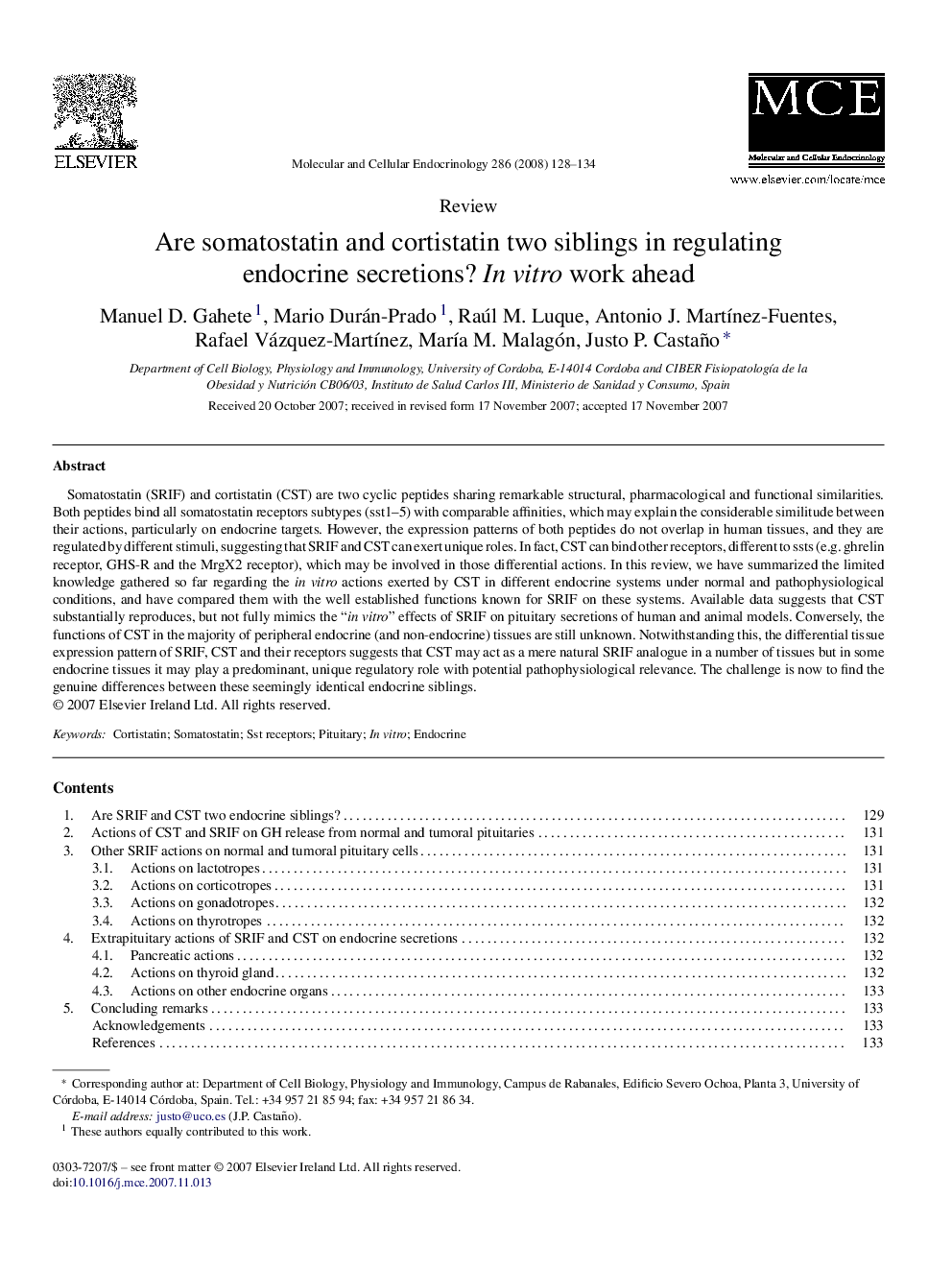| Article ID | Journal | Published Year | Pages | File Type |
|---|---|---|---|---|
| 2197656 | Molecular and Cellular Endocrinology | 2008 | 7 Pages |
Somatostatin (SRIF) and cortistatin (CST) are two cyclic peptides sharing remarkable structural, pharmacological and functional similarities. Both peptides bind all somatostatin receptors subtypes (sst1–5) with comparable affinities, which may explain the considerable similitude between their actions, particularly on endocrine targets. However, the expression patterns of both peptides do not overlap in human tissues, and they are regulated by different stimuli, suggesting that SRIF and CST can exert unique roles. In fact, CST can bind other receptors, different to ssts (e.g. ghrelin receptor, GHS-R and the MrgX2 receptor), which may be involved in those differential actions. In this review, we have summarized the limited knowledge gathered so far regarding the in vitro actions exerted by CST in different endocrine systems under normal and pathophysiological conditions, and have compared them with the well established functions known for SRIF on these systems. Available data suggests that CST substantially reproduces, but not fully mimics the “in vitro” effects of SRIF on pituitary secretions of human and animal models. Conversely, the functions of CST in the majority of peripheral endocrine (and non-endocrine) tissues are still unknown. Notwithstanding this, the differential tissue expression pattern of SRIF, CST and their receptors suggests that CST may act as a mere natural SRIF analogue in a number of tissues but in some endocrine tissues it may play a predominant, unique regulatory role with potential pathophysiological relevance. The challenge is now to find the genuine differences between these seemingly identical endocrine siblings.
